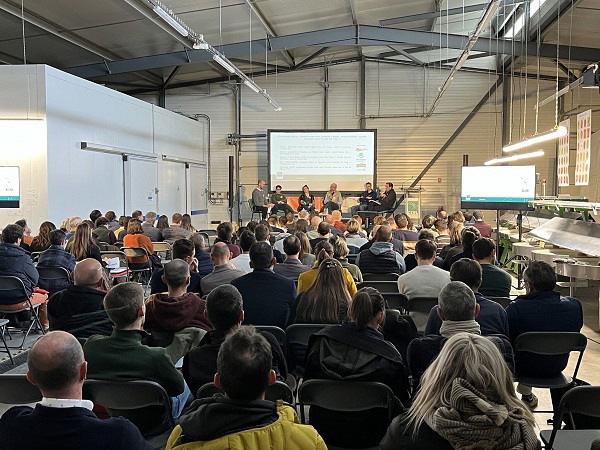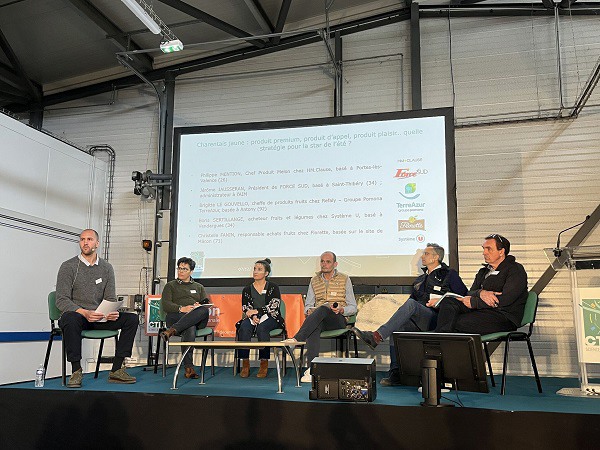On December 7, the CTIFL in Balandran organized a day dedicated to melon. Seed growers, producers, and distributors discussed the latest developments and issues in the melon sector, from the production and marketing of melons to crop protection and varietal research. Here's a brief overview of the main points addressed.
Declining sales of melon
"We're noticing a drop in the amount of melon purchased", begins Margaux Kerdraon. Households are spending the same amount, but given that the average price per kilo has risen between 2021 and 2022, the quantity in the shopping basket is lower". French Charentais are the most popular. "We must also take into account the decrease in surface areas in Spain and Morocco. While the surface area in France has decreased, due to the decline of producers, output is expected to remain stable between 2022 and 2023.
Charentais is still the most popular reference compared to the others. For example, in July, Charentais represented 85% of the market, Canari 35%, Piel de Sapo 30% and Galia 20%.

© CTIFL
As for the breakdown of household purchases according to income, age, region, and socio-professional category: "Melon is mainly bought by people aged 50 and over. The 60/70 age bracket is the top buying segment. Income-wise, it's the upper-middle segment that's the most affluent. And finally, in terms of region, melons retain their status of local products, with the main producing regions (South-East and South-West) having the highest consumption rates".
Consumer expectations: changing perceptions
Consumer's expectations of melon have changed. Experimental stations have noted this trend as part of their varietal research. "Whereas 10 years ago, consumers were mainly looking for an aromatic melon, today they want sugar and firmness", says Margaux Kerdraon. To meet this demand, CTIFL will be launching a project in 2024 "aimed at better-characterizing consumer expectations".

© CTIFL
Climatic hazards and supermarket advertising
Melon ranks first in the "TOP 5 most promoted fruits after kiwi, apple, orange and pineapple". However, such campaigns are not without question, given the complications that may arise during production. "During the round-table discussions, a great deal of thought was given to the uncertainties that melon growers sometimes have to contend with, and to the strategies used by supermarkets to promote their products, which can put growers in a difficult position. The industry would therefore like to see more sensitivity on the part of supermarkets to the vagaries of production".
Varietal leverage
Bio-aggressors were another fundamental aspect of the day's discussions. "Research is actively working to identify resistance genes in melon cultivation. In addition, a varietal evaluation network has been set up in the three production basins to provide growers with the best possible advice on varietal selection". Other aspects studied by this network include taste, yield, and size. "In terms of pests and diseases, INRAE has also been working on the problem of the cotton aphid or aphis gossypii, one of the most damaging pests to melon cultivation, whose presence leads to the development of viruses".
Lever synergy
Studies on the difficulty of protecting crops from bio-aggressors were also presented at the event. While alternative levers sometimes prove ineffective, evaluating these synergistic levers shows good results. "Alternative levers grouped can achieve specific environmental or economic objectives, for example".
Other topics covered included cultivation practices, such as biodegradable mulching to reduce the use of plastic, tillage, and fertilization for organic melon cultivation, and irrigation management tools (conducted by SUD EXPE).
For more information :
Centre CTIFL de Balandran
751 Chemin de Balandran
30 127 Bellegarde
Tel. : +33(0)4 66 01 10 54
https://www.ctifl.fr/
